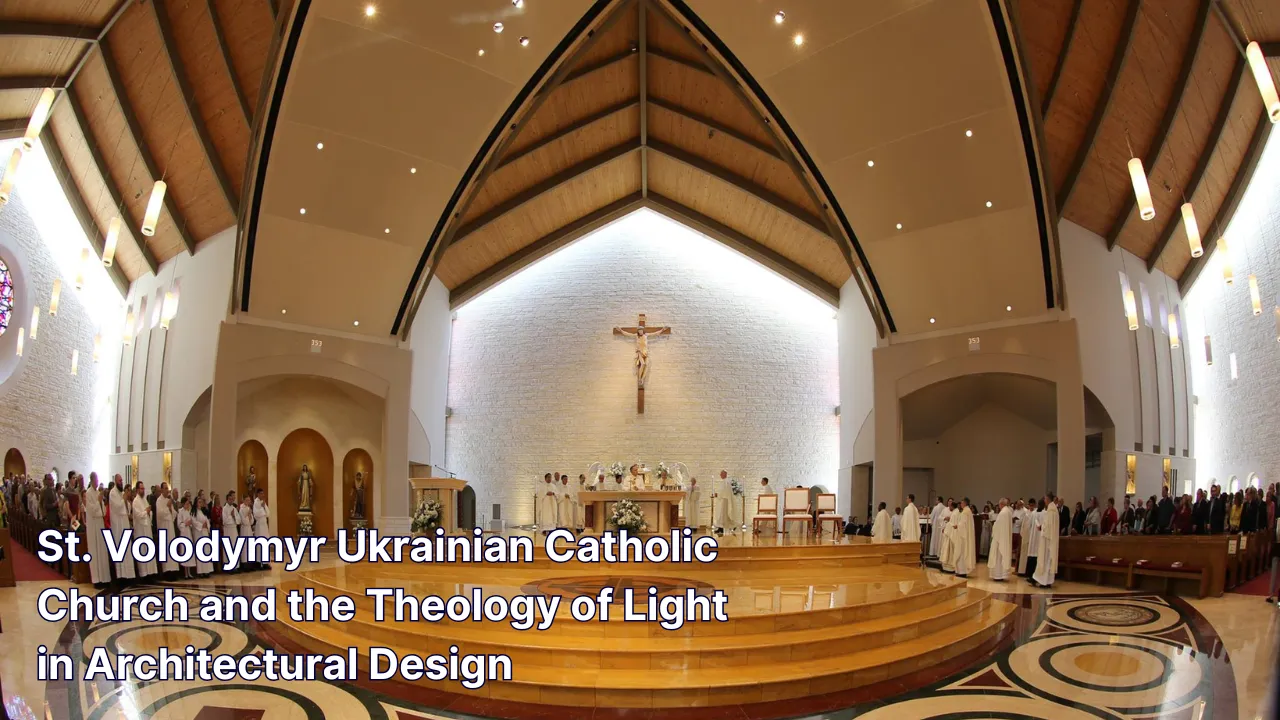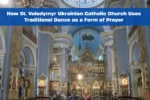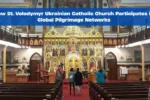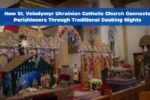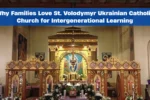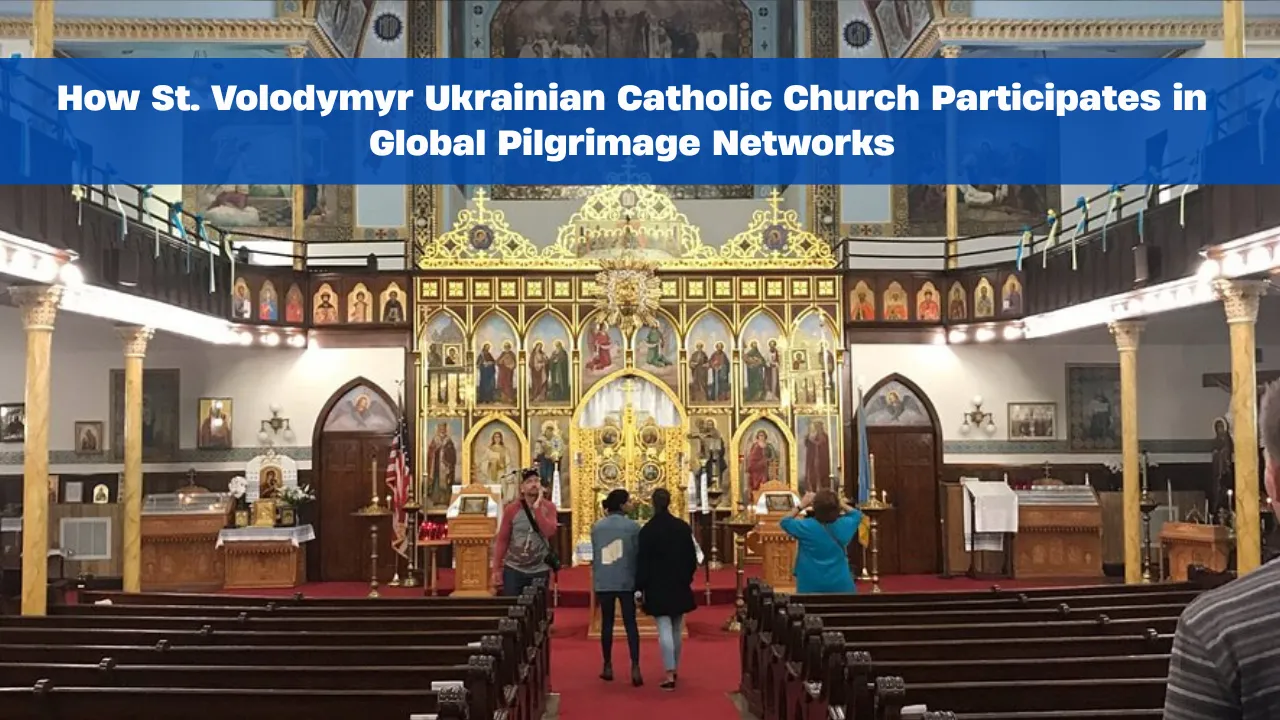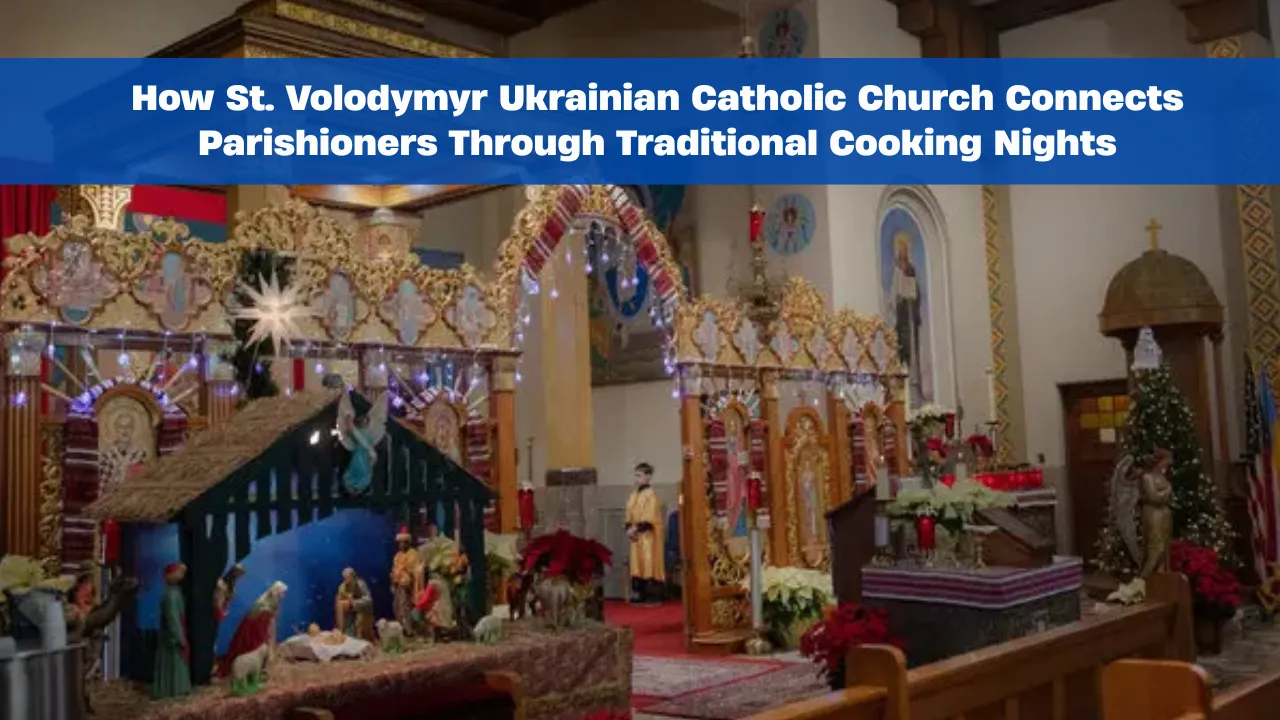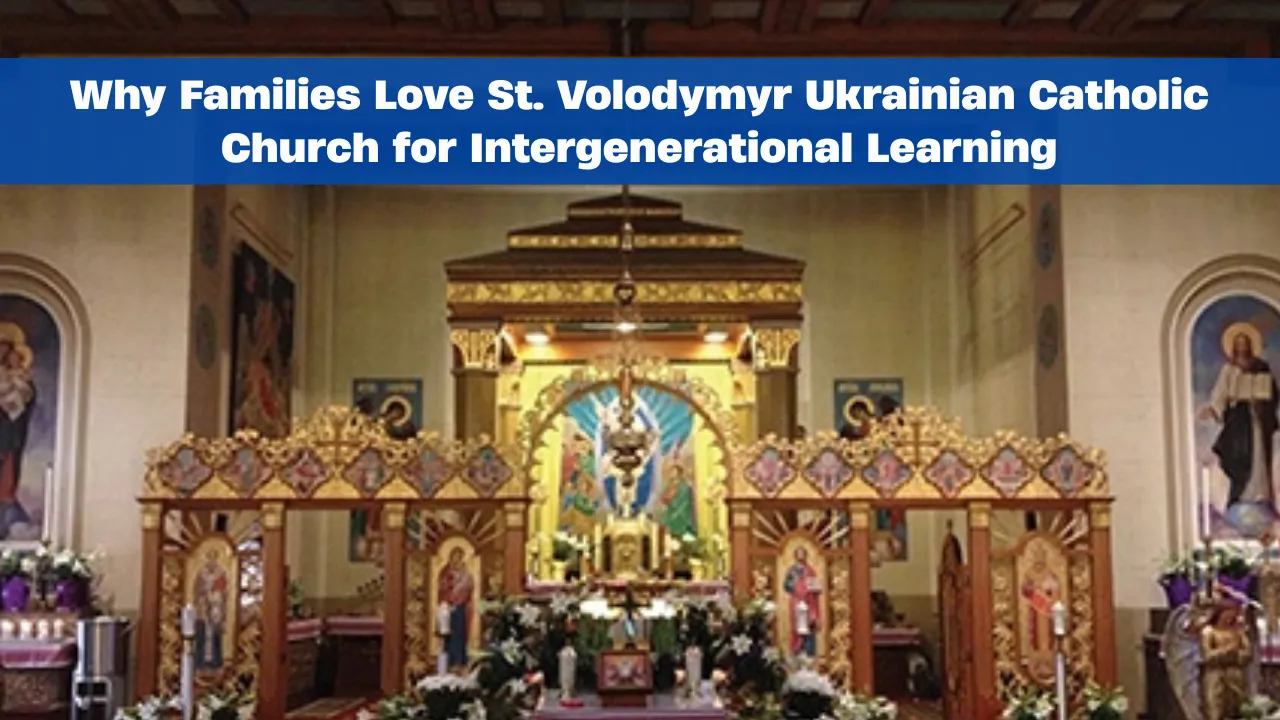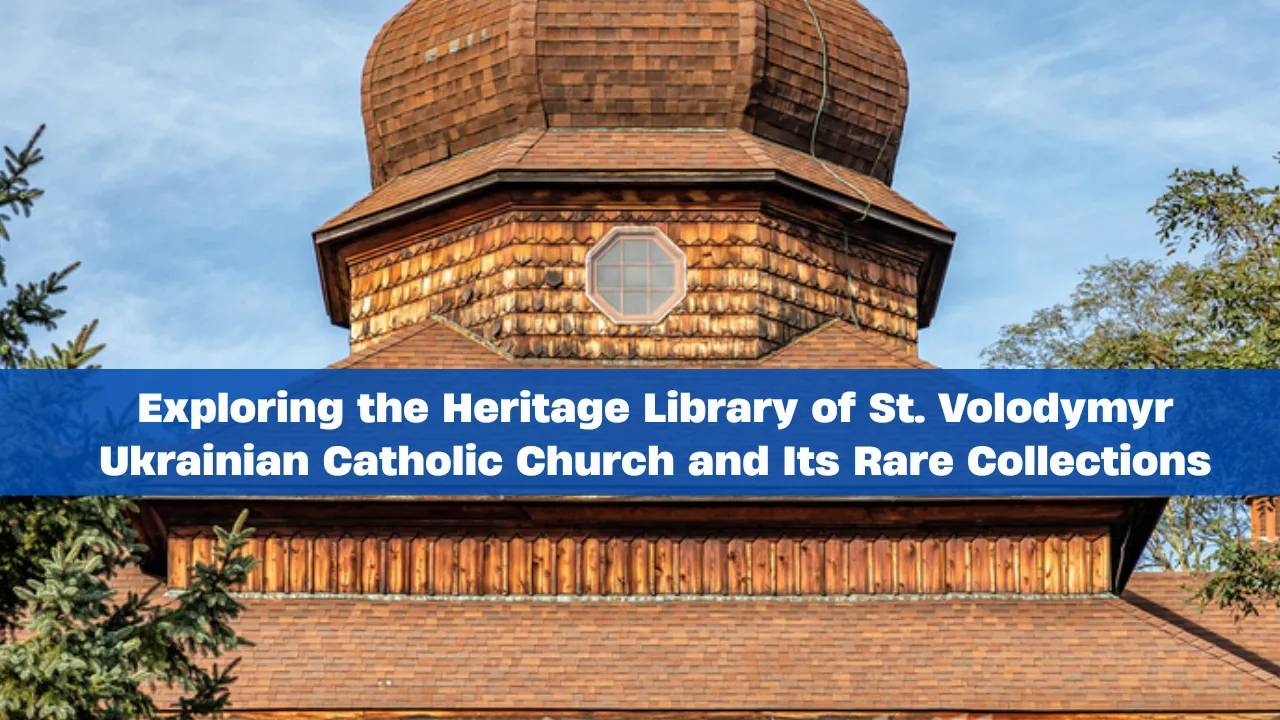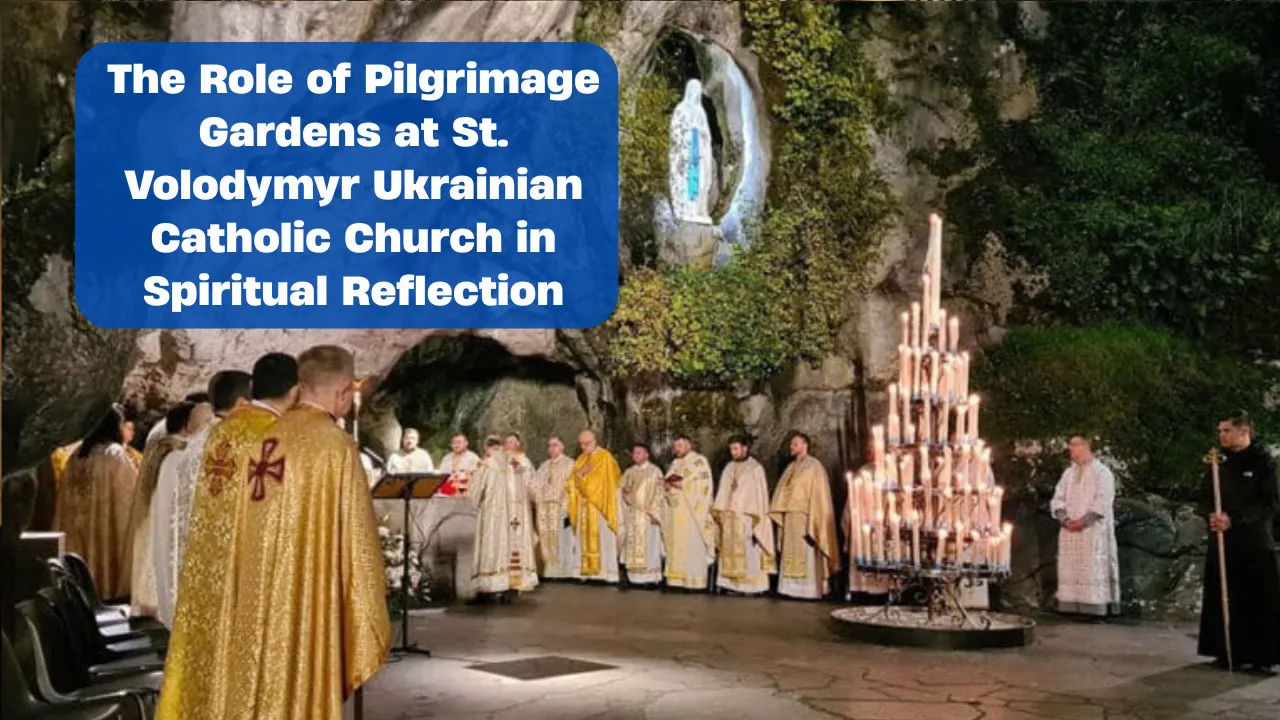Theology of Light in Church Design: Theology of Light has long served as a profound and poetic foundation for designing sacred architecture. Nowhere is this more evident than in St. Volodymyr Ukrainian Catholic Church, where every ray of light becomes a prayer in itself. Light is not just functional here; it’s a sacred participant in the liturgy, shaping the mood, enhancing spiritual connection, and illuminating faith.
This article explores how both natural and artificial light are thoughtfully used to shape the spiritual experience within the church. We’ll uncover the relationship between light and religious symbolism, how sacred space is enhanced through illumination, and how architectural features translate theological principles into visual reality.
Theology of Light in Church Design
The Theology of Light in architectural design is more than symbolic; it is the physical manifestation of the divine. In churches like St. Volodymyr Ukrainian Catholic Church, this concept guides the placement of windows, orientation of the building, and materials used to reflect or diffuse light. The belief that light is sacred stems from ancient teachings where divine presence was often revealed through radiant or glowing elements. By integrating this theology into architecture, churches don’t just house worship—they embody it. This theological approach turns light into a storyteller, guiding worshippers emotionally and spiritually through every liturgical moment.
Overview of Topics Covered
| Section Title | Focus |
| Light as a Symbol of the Divine | Explores the spiritual symbolism of light |
| Architectural Techniques That Use Light | Looks at design methods for guiding light |
| Natural Light Enhancing Sacred Meaning | Discusses the impact of sunlight in sacred spaces |
| Artificial Light Supporting Ritual and Reflection | Details how artificial light supports worship |
| How Light Guides the Spiritual Journey | Describes the movement of light as a narrative |
| Key Features of Light in the Church | Lists key visual elements of light design |
| The Influence of Eastern Christian Tradition | Connects architectural choices with tradition |
| Connecting Light, Art, and Worship | Highlights the unity of lighting, art, and faith |
Light as a Symbol of the Divine
Light has been a symbol of the divine across cultures and religions, but within Christian architecture, its role is particularly profound. At St. Volodymyr Ukrainian Catholic Church, light serves as a bridge between the material and the spiritual. It is used to suggest the unseen—God’s presence—through the seen, that is, the light that fills the sacred space.
The church’s design doesn’t rely on bright illumination for utility alone. Instead, it creates layers of light that vary throughout the day, turning the church into a dynamic, living canvas. This interplay of light and shadow becomes a metaphor for the spiritual journey—moments of clarity, mystery, and divine revelation. In this sense, light is not just a tool; it is an act of worship.
Architectural Techniques That Use Light
Every architectural decision in sacred design influences how light behaves. In St. Volodymyr, the use of vertical space, window placement, and reflective materials all contribute to a deliberate choreography of light. The structure is not just built to contain people but to shape their experiences of holiness through visual cues.
Narrow, elongated windows allow shafts of light to enter and focus on liturgical spaces such as the altar and iconostasis. The dome overhead acts as a light well, welcoming sunlight and dispersing it across the nave. Light-colored walls and gold-leaf iconography reflect and enhance this glow, reinforcing the sense of transcendence. These techniques aren’t simply aesthetic—they reinforce spiritual purpose.
Natural Light Enhancing Sacred Meaning
Sunlight is one of the most sacred materials in religious design, not only for its visual warmth but for its theological implications. In churches like St. Volodymyr, the rhythm of the day is reflected in the light’s movement, marking sacred time alongside liturgical time.
Morning light streams through the eastern windows, symbolizing resurrection and new beginnings. As the sun arcs across the sky, it creates an evolving atmosphere within the sanctuary—warmth at noon, shadows in the afternoon, quiet golden hues in the evening. This journey of light mirrors the emotional stages of prayer and contemplation, supporting a sense of divine presence throughout the day.
Artificial Light Supporting Ritual and Reflection
While natural light forms the heart of daytime liturgy, artificial lighting ensures continuity of sacred experience after sunset or during darker seasons. At St. Volodymyr Ukrainian Catholic Church, artificial lights are not overly bright or clinical; they are selected for warmth, softness, and emotional resonance.
Subtle spotlights illuminate key icons and sacred texts without overwhelming them. Hanging lamps above the nave echo traditional candle-lit spaces, keeping a connection with historical worship practices. Recessed lighting beneath the dome enhances its architectural presence, allowing the symbolism of heaven to remain visible even at night. This intentional design supports both reflection and ritual, extending the spiritual function of light beyond daylight hours.
How Light Guides the Spiritual Journey
One of the most striking aspects of sacred architecture is how it uses light to tell a story. At St. Volodymyr, movement through the church is marked by a subtle narrative of light. Upon entering, light draws attention forward toward the altar, guiding worshippers to the spiritual heart of the space.
As one moves through the aisles or pauses at side chapels, the lighting adjusts—either by design or through the natural shift of the sun. These changes support personal moments of prayer, providing both focus and calm. This careful control of light movement reflects the emotional arc of a liturgical experience, from welcome to reflection to communion with the divine.
Key Features of Light in the Church
- Stained-Glass Windows with Symbolic Imagery
The vibrant stained-glass windows feature scenes from scripture and saints, transforming natural light into a storytelling medium that changes color and intensity throughout the day. - Domes and Skylights That Invite the Heavens In
The main dome acts as a symbolic “eye to the sky,” drawing light directly downward and reinforcing the theological belief that heaven is ever-present in worship.
The Influence of Eastern Christian Tradition
Eastern Christian tradition places deep importance on symbolism in architecture and ritual, and light is at the center of this. In St. Volodymyr Ukrainian Catholic Church, this tradition is honored through the use of gold, reflective iconography, and the strategic dimness of certain spaces to enhance mystical experience.
Icons are painted with reverse perspective and layered gold leaf so they don’t just sit in shadow—they catch and reflect it. Candles are still used in parts of the liturgy, not just for tradition but because of their symbolic and atmospheric contribution. The church’s layout, from entrance to sanctuary, aligns with ancient Eastern principles that blend theology and space.
Connecting Light, Art, and Worship
In St. Volodymyr, light doesn’t merely illuminate art—it animates it. A shaft of light falling across an icon brings it to life, causing colors to glow and lines to shift subtly with time. This interaction between illumination and artwork deepens the emotional and spiritual response of worshippers.
The careful coordination between light and art enhances every liturgical moment. The altar becomes radiant during key parts of the service. Sacred music is often timed with changing light. In this way, the church becomes a full sensory experience where light, sound, and space unite to point toward the divine.
FAQs
What is the Theology of Light in church design?
It is the idea that light represents divine presence and is used intentionally in churches to create sacred, spiritual environments.
Why is natural light important in churches like St. Volodymyr?
Natural light enhances the spiritual atmosphere by changing throughout the day, symbolizing the presence and movement of the divine.
How does artificial lighting support the spiritual experience?
Artificial lighting is designed to mimic the warmth and softness of natural light, supporting liturgy and prayer during evenings or cloudy days.
What role do stained-glass windows play?
Stained-glass windows are both decorative and spiritual, transforming light into stories and enhancing the beauty and meaning of the space.
How is Eastern Christian tradition reflected in lighting design?
It is reflected in the use of gold, reflective materials, candlelight, and iconography that all interact with light to elevate worship.
Conclusion
St. Volodymyr Ukrainian Catholic Church reveals the deep connection between architecture, theology, and sensory experience. Through the careful and meaningful use of light—both natural and artificial—the church doesn’t just host worship, it becomes a living expression of it. The Theology of Light transforms every corner into a sacred narrative, guiding each person closer to understanding, reflection, and faith. If you’re moved by the role of sacred space in worship, we invite you to comment below and explore more insights into spiritual design.
